A foodie guide on the best food to eat in Spain, and about the best dishes to try in Spain
From Catalonia’s beloved paella to Seville’s iconic tapas, Spain is a foodie paradise!
Whether you’re planning an epic trip or just dreaming of one for now, there are countless dishes in the country that you simply must try during your travels.
In this post, we’ll go through some of the most delicious and unique foods from each region in when you travel Spain – from seafood delicacies to mouthwatering desserts.
Wondering what to eat in Spain? Get ready to tantalize your taste buds and experience Spanish cuisine like never before!

You, dear reader, support this blog. When you purchase through a link, I may earn a small commission. As an Amazon Affiliate, I earn from qualifying purchases.
Pssst…??!! You can’t get enough Spain posts? Have a look at my other posts:
Table of Contents
Famous Dishes from the Valencian Region
Valencia is the birthplace of some of the most famous dishes in Spain.
This coastal city is a real treasure for all of us who yearn for the full experience and locally produced ingredients.
It’s fresh seafood and rich land for growing all kinds of vegetables are just some of the things you will notice on your plate.
Valencia is best known for its paellas, and it is said that the real paella can’t be made elsewhere!
If you want to get a feel of local cuisines, you can visit the best Paradores in Spain.
You should definitely try them as they serve the best cuisines with great variety.
If you are planning to visit Valencia, have a look at my 1-day Valencia itinerary or this guide on how to spend 3 days in Valencia.
1. Paella
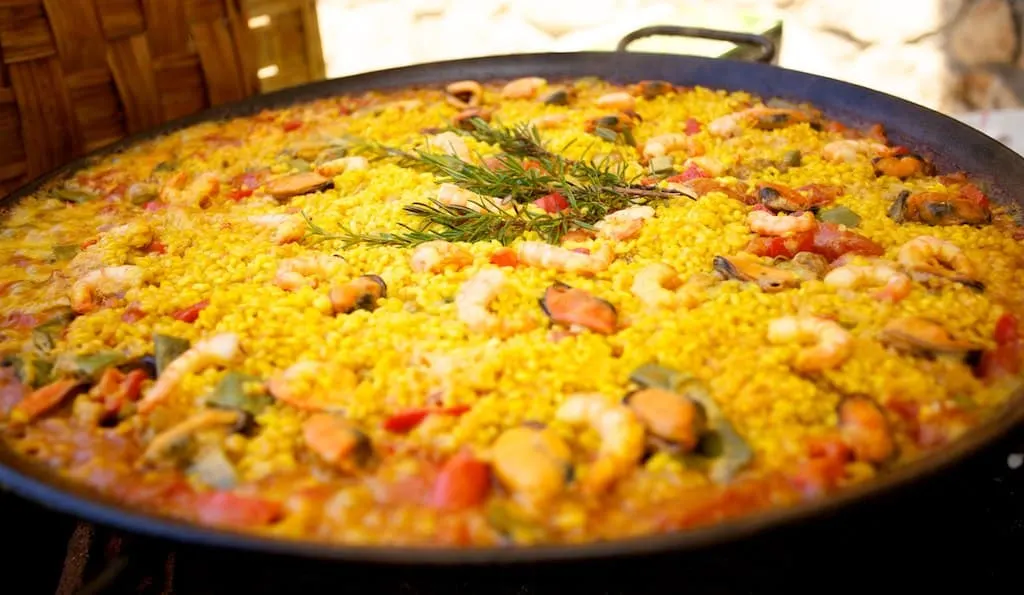
As I mentioned before, paella is a food synonymous with the Valencian region. This tasty food of Spain is a rice dish that is usually mixed with meat and vegetables.
Traditionally, it requires a special flat pan and is prepared over high heat, but if you don’t have one, you can prepare the paella in a regular pan as long as it is for a maximum of three people.
The authenticity of enjoying these famous dishes from Spain at home is guaranteed by putting the pan in the center of the table and eating directly from it.
This dish is a must when traveling to Spain and in case you are visiting Valencia for 3 days or more, make sure to try it at least once!
If you can’t travel to Spain right now, you can get amazing Paella kits at Amazon. Making paella at home as never been easier. – Check at Amazon
Read: Valenciana Paella Recipe
2. Fideuà – Noodle Paella
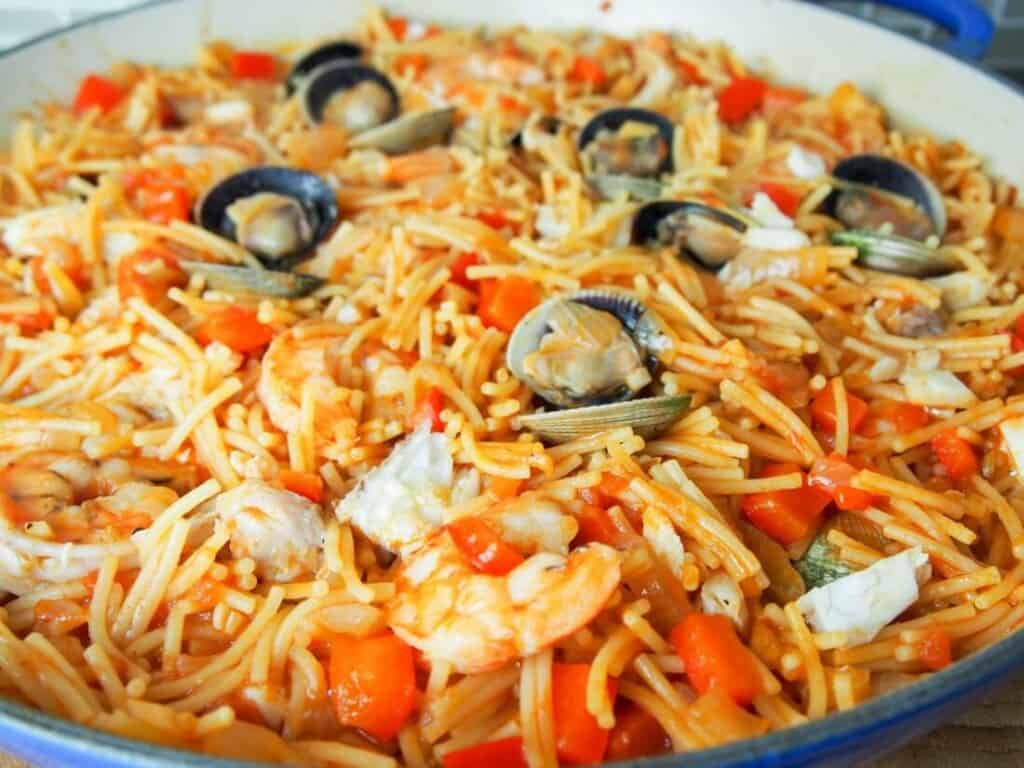
Although recently, Fideuà (noodle paella) became popular in Barcelona, its origin is actually Valencian, and it’s now one of the most popular dishes that Spain is known for.
Essentially, it is a noodle version of paella that uses pasta rather than rice as its base.
This means that you need a big flat pan (paella) to prepare it, and as with the classic paella, it is best to make it outside, on the open fire.
Fideuà is served as a common food in Spain, and there are several variations you can try.
It’s usually served with aioli (a garlic, salt, and olive oil sauce found in the cuisines of the northwest Mediterranean, from Valencia to Calabria).
Read: Paella with Pasta Recipe
3. Turrón – Nougat
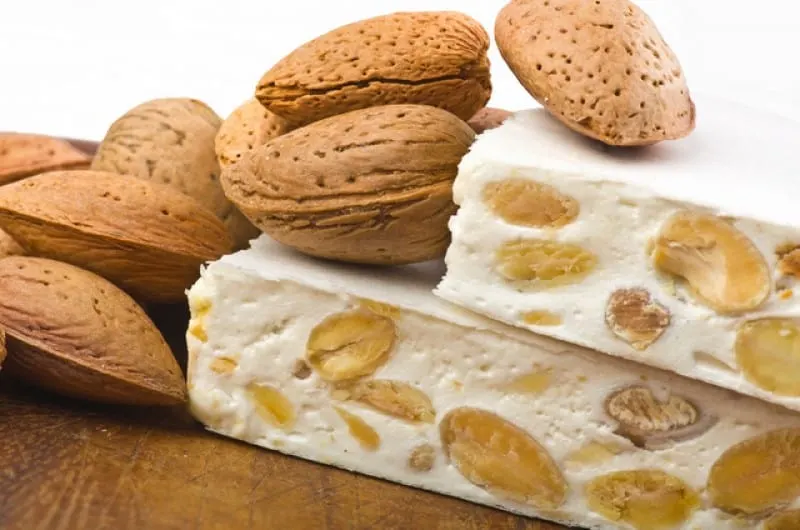
If you wonder what people eat in Spain during Christmas, turrón (nougat) will come up as one of the answers.
Turrón is difficult to classify it since it is something between a desert and a pastry.
However, if you are looking for an English word for it, the simplest translation is nougat.
The usual ingredients are almonds, honey, egg whites, and sugar, but the tricky part is knowing the right time to mix and roll them.
If you can’t travel to Spain, you can order Turrón at Amazon! – Check prices here
4. Horchata – Tiger Nut Milk

If you are into trying food and drinks from Spain, horchata (tiger nut milk) should be on your top priority list!
The typical horchata is called “horchata de chufas” (chufa is a tiger nut), but there are a few variations of it.
It is a cold, milk-type beverage, known as one of the most famous after-lunch snacks from Spain.
Do you want to make Spanish horchata at home? You can order it at Amazon. – Check prices here
Valencian Horchata Drink

The most refreshing of all Spanish drinks.
It is a cold, milk-type beverage, and it is known as one of the most famous after-lunch snacks from Spain.
Ingredients
- 2 cups of tiger nuts
- 1 glass of water
- ¼ teaspoon of cinnamon powder and lemon zest
- 1-2 teaspoons of white sugar
Instructions
- You need two cups of tiger nuts. Make sure that you soak them for at least 24 hours. They need to become soft enough so you can liquidize them later.
- After you drain the chufas, blend half of them with cold water (use about half of the cup) until you get an even mixture.
- Add ¼ teaspoon of cinnamon powder into the mixture along with the lemon zest. You can also add one or two teaspoons of white sugar to make it sweeter.
- Make sure that you put the mixture into the pitcher and then fridge it for at least four hours. Remember, horchata should be served cold and preferably in tall glasses.
Nutrition Information:
Yield:
5Serving Size:
1Amount Per Serving: Calories: 333Total Fat: 29gSaturated Fat: 5gTrans Fat: 0gUnsaturated Fat: 23gCholesterol: 0mgSodium: 148mgCarbohydrates: 13gFiber: 4gSugar: 4gProtein: 11g
5. Arroz al Horno (Spanish Baked Rice)
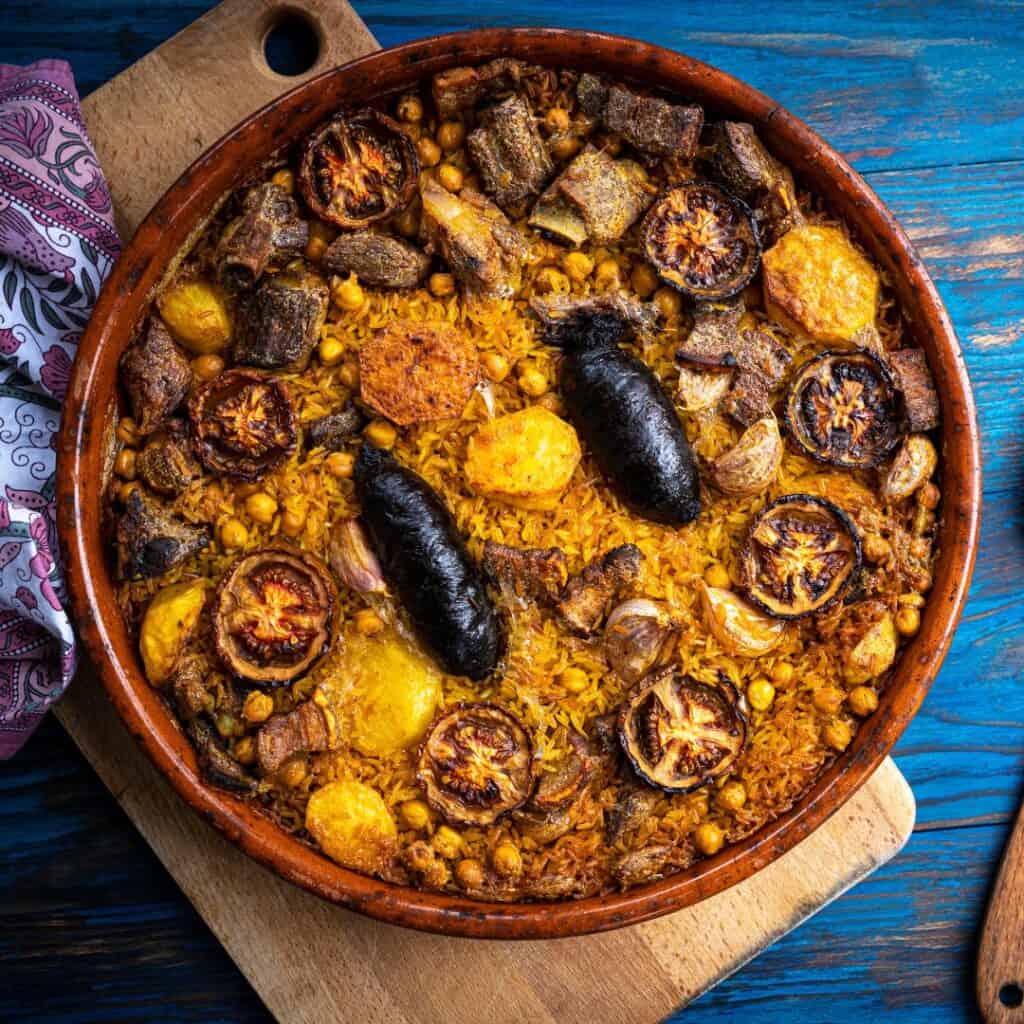
Arroz al Horno, or Spanish Baked Rice, is a hearty and flavorful Spain signature dish that epitomizes the comfort food of the Valencia region.
This Spain traditional food combines a medley of rich ingredients, including tender pork ribs, savory blood sausage, ripe tomatoes, chickpeas, potatoes, and aromatic garlic.
These elements are layered with rice and then baked in the oven until the top is golden and slightly crispy, and the flavors meld into a satisfying and robust meal.
Read: Spanish Baked Rice Recipe
Typical Food from Barcelona and Catalunya
Catalunya is one of the biggest gastronomy centers in Spain, and the diversity of food offered in this region is one of its highlights.
Also, their typical menu confirms a strong regional distinction from the rest of Spain’s food.
The whole area is rich in ingredients such as seafood and local land products, so there is a lot to choose from.
Therefore, it is not surprising that many people consider Barcelona one of the best places in the world!
No wonder it has been the film location for several movies set in Spain and considered one of the most beautiful places in Spain you must visit.
If you want another taste of Spain, look at my favorite funny Spanish phrases.
6. Patatas Bravas – Fried Potatoes
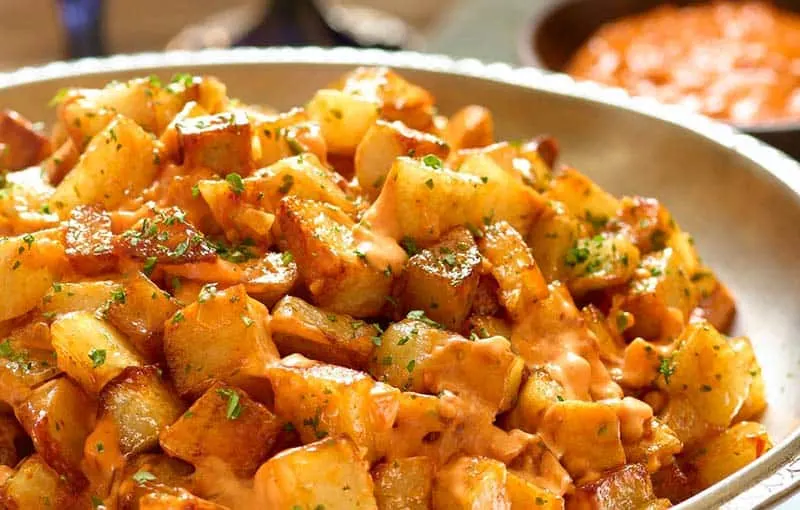
Patatas bravas (fried potatoes) is a signature dish that the Catalan region is proud of.
This famous Spanish food is easy to prepare since it consists of deep-fried potatoes and sauce.
Due to its popularity and simplicity, you will find many variations in other countries.
It is an ideal choice if you are in a hurry or simply need a good Spanish snack or a quick dinner in Spain.
Patatas bravas is also one of the best traditional foods in Spain for vegans and vegetarians.
Read: Patatas Bravas Recipe
7. Pa Amb Tomàquet
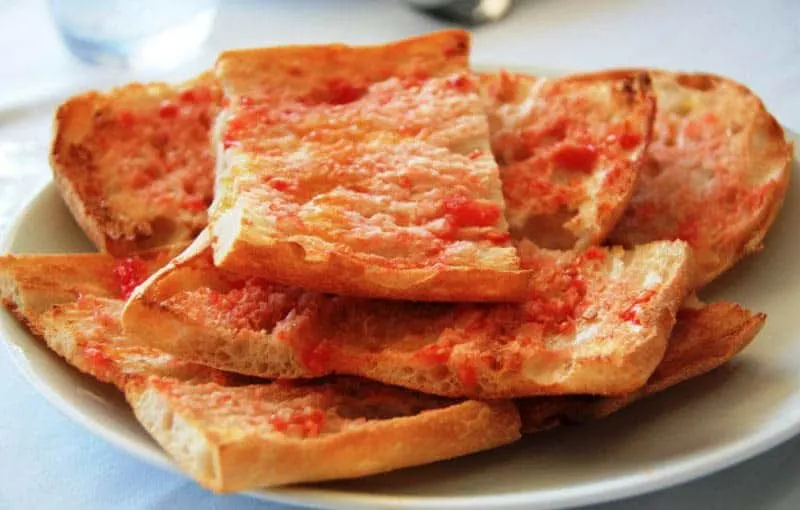
This is another classical dish from the region of Catalunya, Spain.
The dish goes by several names, but the most common ones are pa amb tomàquet, pan con tomate, and pan tumaca.
If you are wondering what to eat in Spain to start your day, look no further than this simple, tasty dish.
Because it is very easy to make and light for the stomach, it is, therefore, one of the main foods in Spain served for breakfast.
There are a few ways to make pa amb tomàquet, but here is the most common one:
Traditional Pan Tumaca from Barcelona
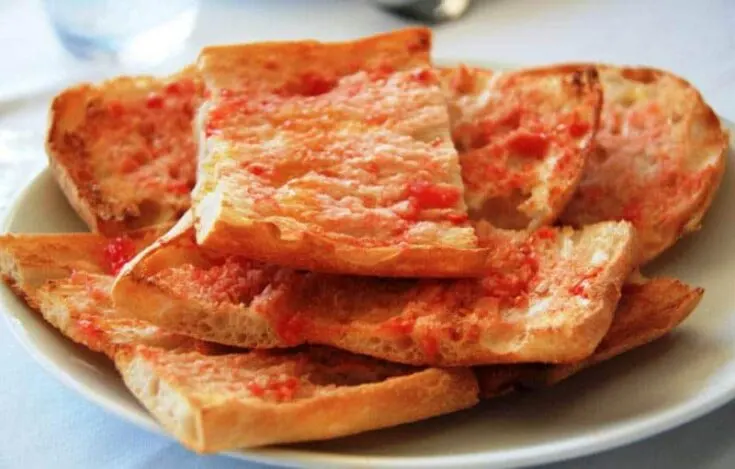
Pan Tumaca is one of the main foods in Spain served for breakfast. There are a few ways to make pan tumaca, but here is the most common one.
Ingredients
- 4 tomatoes
- Several toast bread slices
- 4 garlic cloves
- 1 tablespoon of olive oil
Instructions
- Take four tomatoes (medium size), cut them in half, and discard the skin.
- Meanwhile, you should toast sliced bread until it gets a nice, brown color.
- Put the cut tomatoes into a bowl and add a tablespoon of olive oil.
- You will also need a clove of garlic. Rub the garlic into bread slices when you finish toasting them.
- Finally, put the tomato-olive oil mixture over the garlic-soaked bread and add a pinch of salt if needed
Nutrition Information:
Yield:
10Serving Size:
1Amount Per Serving: Calories: 29Total Fat: 2gSaturated Fat: 0gTrans Fat: 0gUnsaturated Fat: 1gCholesterol: 0mgSodium: 15mgCarbohydrates: 4gFiber: 1gSugar: 1gProtein: 1g
8. Cava – Sparkling Wine

When it comes to well-known food and drinks from Spain, cava is a good representative.
This popular drink is fundamentally made like champagne but with different types of grapes, making this one of the best Spanish Wines.
This sparkling wine’s simple, lemony flavor comes from Macabeu, the basic grape type used for its production.
Cava is often described as an affordable substitute for champagne and served on different occasions.
There are several beautiful wineries you can visit or take a wine tour to these prettiest wineries near Barcelona.
9. Crema Catalana – Catalan Cream
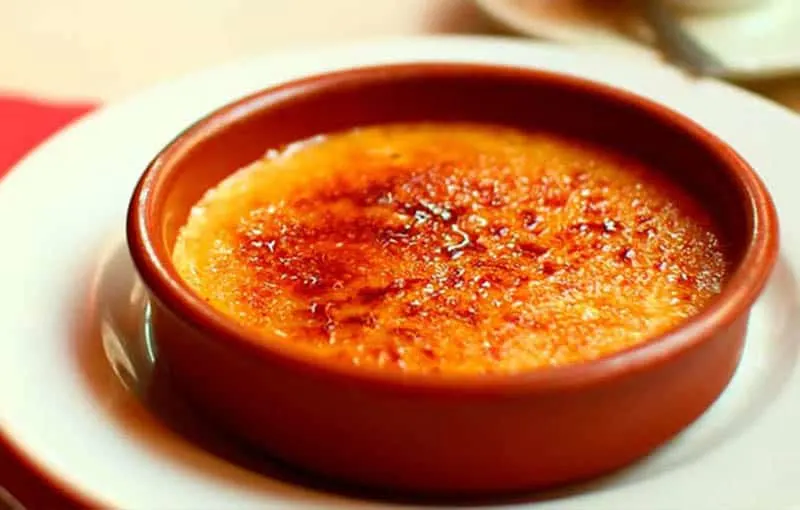
Crema Catalana (Catalan cream) became one of the favorite desserts for many of us who had the chance to try it.
This is one of the foods of Spain that is simple to make, and in terms of taste, it can be compared with crème brûlée.
People love it because the list of the things you need to make it is very short and available locally.
It is smooth, sweet, rustic, and indulgent simultaneously which is why it might become your favorite too.
You don’t have to travel to Spain to indulge in Crema Catalana; you can easily order it online. – Check on Amazon
Read: Crema Catalana Recipe
10. Calçots – Green Onions
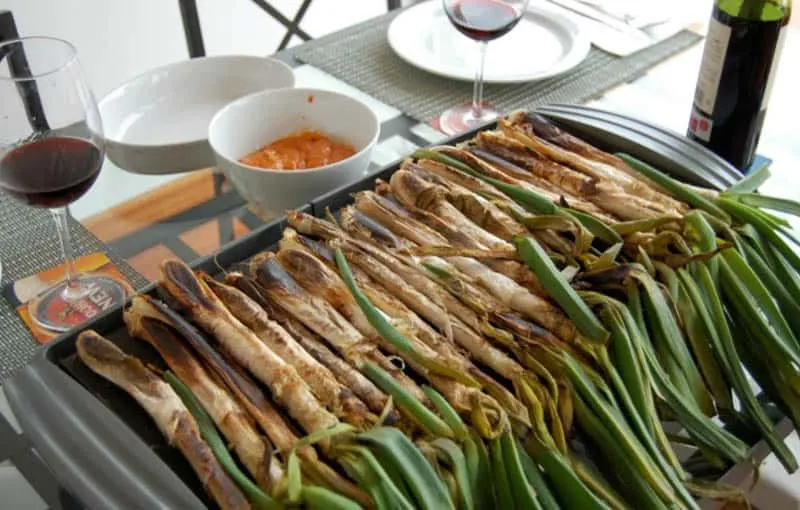
Calçots are a Catalan green onion, traditionally eaten to signal the spring, so it feels like a celebration of a sort.
Although this vegetable is on restaurant menus throughout the year, the proper way to enjoy calçots is to eat it outside while nature is blooming.
This is a typical food in Spain that most tourists overlook but it is definitely a must in the Spring.
11. Botifarra with Mongetes
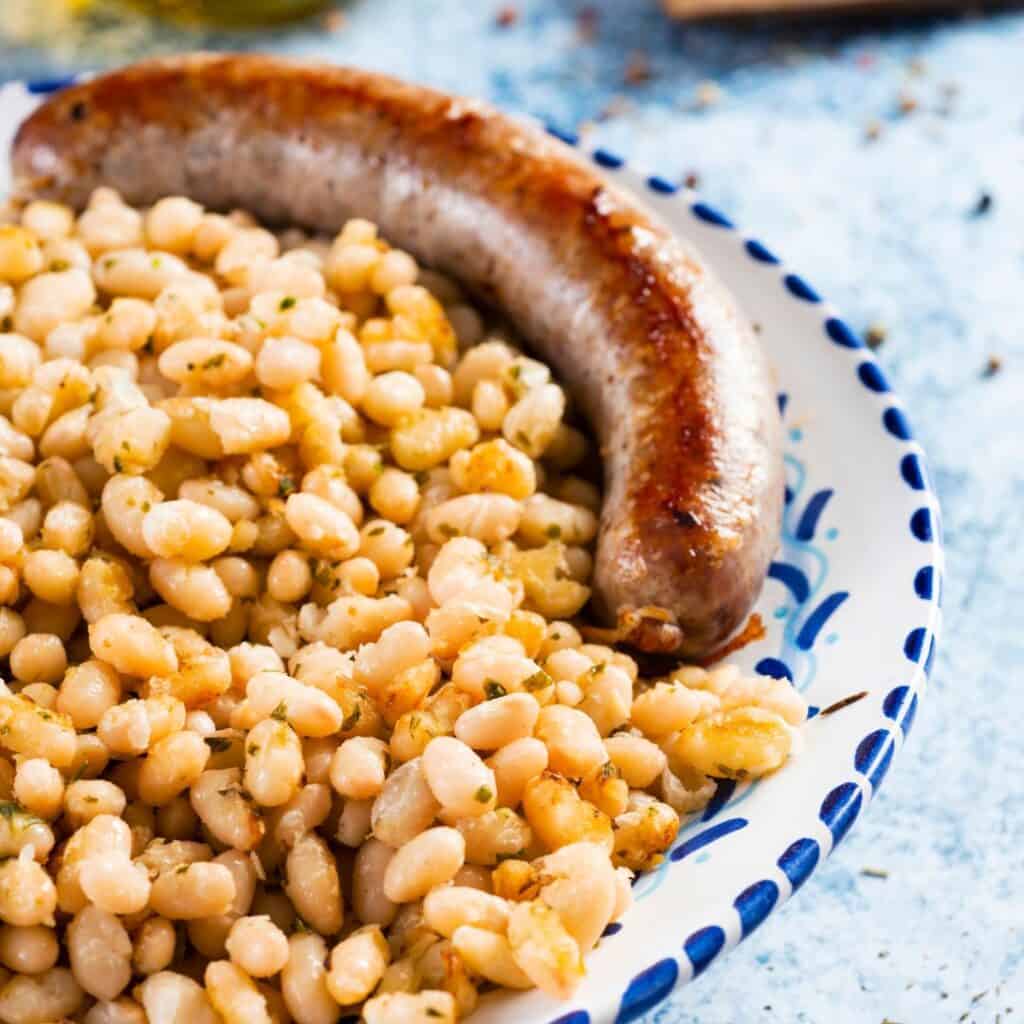
Botifarra with Mongetes is a classic Catalan dish that embodies the simplicity and heartiness of the region’s cuisine.
This is one of the best traditional Spanish dishes that features succulent grilled pork sausages, known as botifarra, which are seasoned to perfection and paired with tender white beans, or mongetes.
The beans are typically cooked with garlic and herbs, enhancing their natural flavors and creating a delightful complement to the savory sausages, making this one of the best foods in Spanish.
Famous Food from Central Spain
Madrid is often considered a melting pot for many different cultures—not only in other Spanish regions but worldwide.
However, there are still plenty of authentic local cuisine to try, and fantastic restaurants to visit for traditional food in Madrid.
The climate of the region influences the food as well, so it is no wonder that meat is one of the dominant ingredients in this part of the country.
Even if you can use your time in Madrid to try all sorts of cuisines, you should really use the chance and try local dishes such as gazpacho, the famous churros, and the typical Spanish tortillas.
12. Jamón Ibérico – Iberian Ham
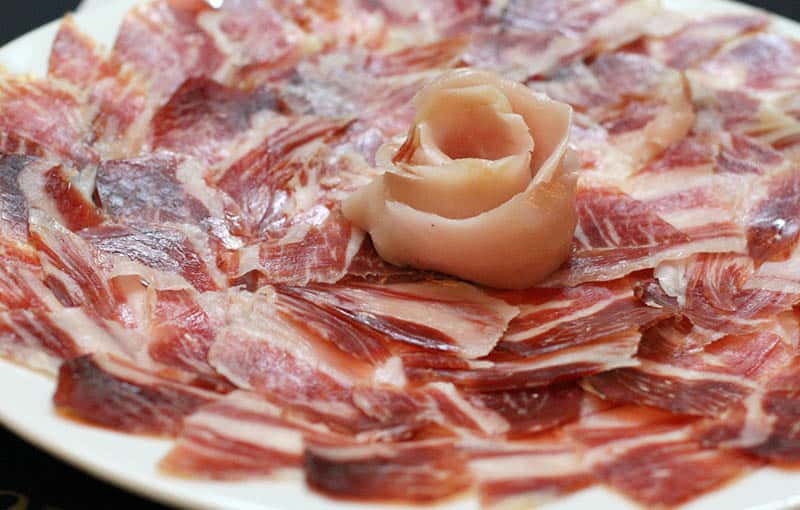
There are two kinds of ham in this world. One is Jamón Ibérico (Iberian ham), and the other is the sum of all other hams.
The question ‘’What do people eat in Spain?’’ can be easily answered: only the best!
Even the back story is fascinating and includes many centuries, different rulers, and the ritual sacrifices that the pigs were used for.
Nowadays, Jamón Ibérico (Iberian ham) is one of the best-known Spanish products, and it can be found worldwide.
You’re not in Spain? No problem, you can get Jamón Iberico at Amazon too! – Check prices here
13. Tortilla Española – Spanish Omelet

This is one of the most popular foods in Spain! It is easy to prepare and versatile enough to be served for breakfast and dinner.
The main reason why tortilla española (Spanish omelet) the omelet is considered to be a Spanish food classic is that all the ingredients are more or less already in our households.
You only need eggs, a few potatoes, a little oil, and an onion to prepare it.
Read: Spanish Omelet Recipe
14. Churros
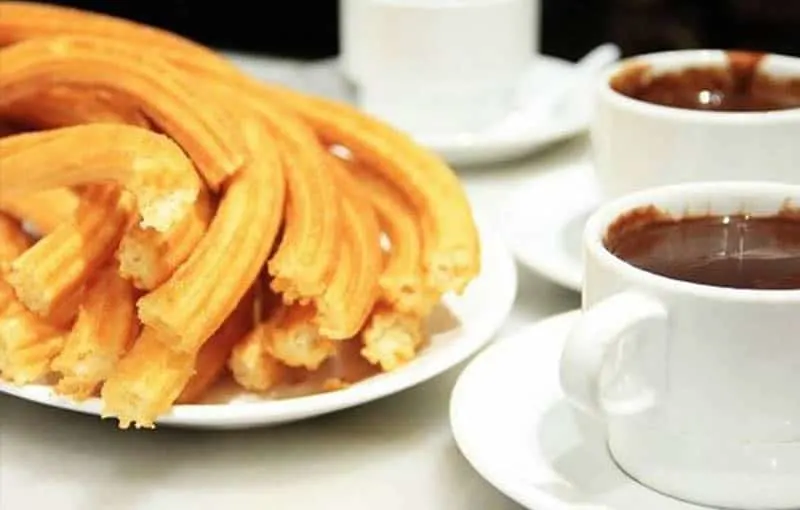
One of the best treats in the Spanish capital is well-made churros.
Churros from Madrid is practically a symbol of Spain in the world of foodies, and it is unthinkable to leave the country without trying them!
Certain churrerías (churros shops) are so popular that people stand in line for hours just to taste this crispy and chocolate-dipped delicacy!
Read: Authentic Churros Recipe
15. Albondigas – Meatballs
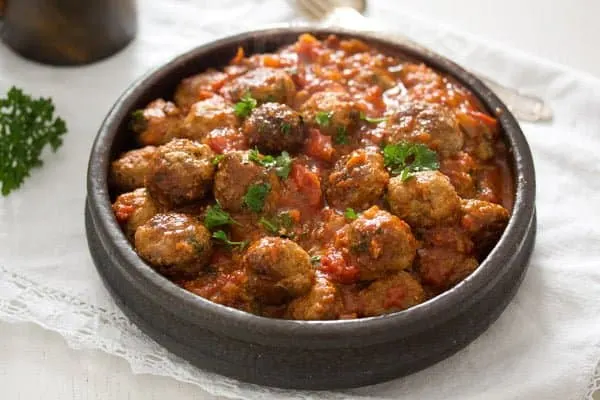
Meatballs are common in many regions that have a climate similar to Madrid.
Albondigas is the Spanish meatball version, usually made for dinner, and you must give it a try as it is one of the must-eat foods in Madrid!
The delicious thing about albondigas (meatballs) is that they are small and made with a flavorful sauce.
This is also one of their biggest distinctions from Italian meatballs.
Read: Spanish Meatballs Recipe
16. Migas – Crumbs
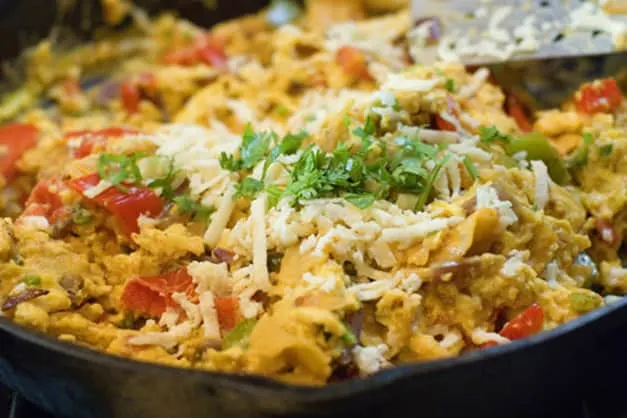
Migas (crumbs) are also a very popular snack and supper idea to try while visiting the central region of Spain.
They are principally fried bread crumbs, typically served with paprika and fried eggs or red chorizo sausage.
It is said that migas are one of the most ancient Spanish dishes!
Read: Spanish Migas Recipe
17. Leche Frita – Fried Milk
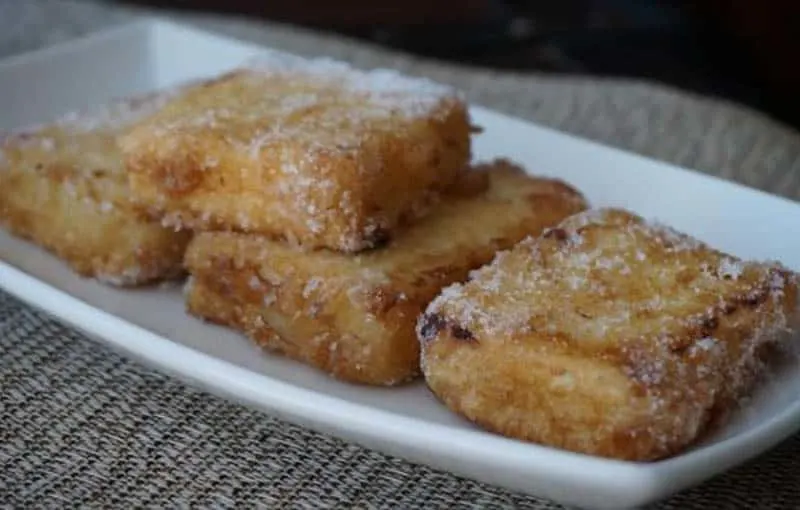
Despite being translated as “fried milk,” which doesn’t sound very tasty, leche frita is an amazing dessert! It has two serving variations.
One is cold, and the other hot, with a scoop of ice cream on the side.
The main ingredients are obviously milk, wonderfully mixed with flavor, eggs, butter, sugar, cornstarch, and cinnamon.
Read: Leche Frita Recipe
18. Pisto Manchego – Ratatouille
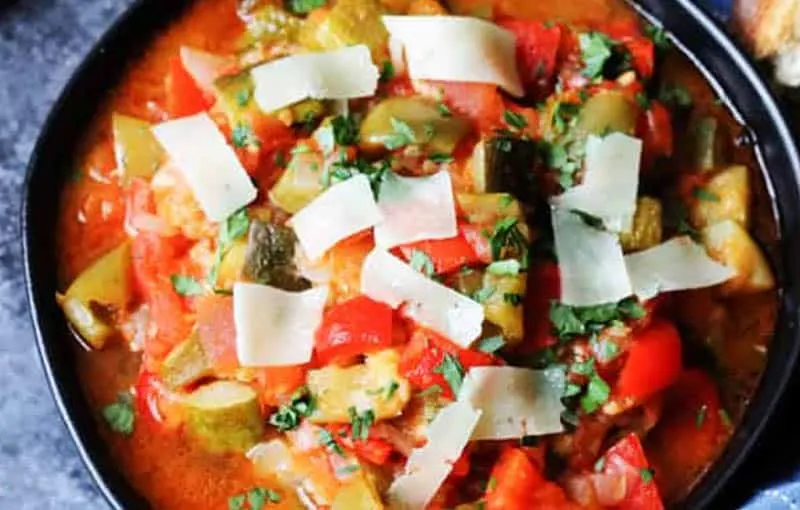
Whether you are a vegetarian or not, you will love pisto manchego (ratatouille).
It is one of the finest mixtures of stewed vegetables, and a food to try in Spain!
Historically speaking, the origin of pisto manchego (ratatouille) is Arabic, however, it is one of the most popular vegetarian dishes in the region.
Read: Pisto Manchego Recipe
19. Cochinillo Asado – Roasted Suckling Pig
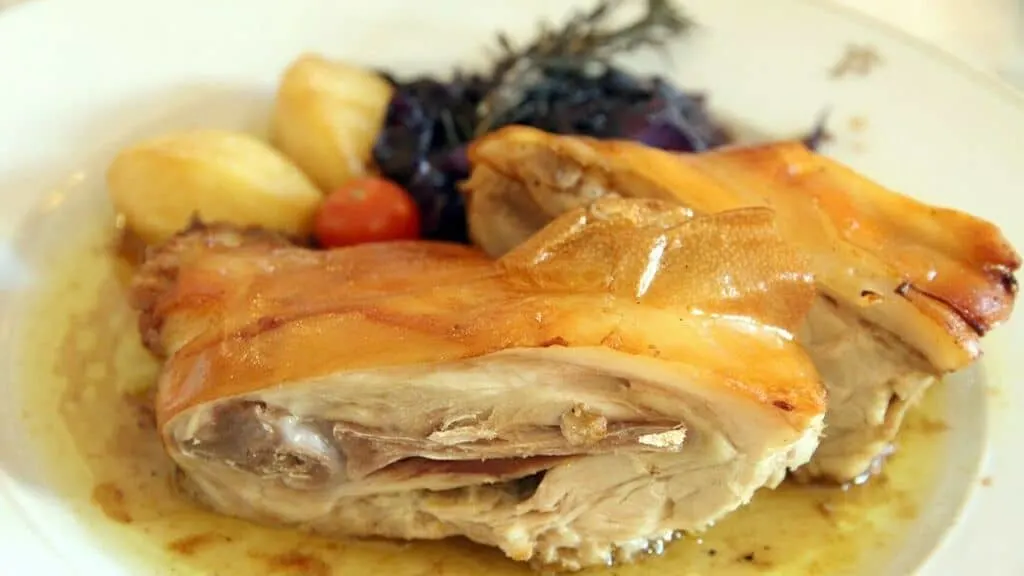
If you are a meat lover, you shouldn’t skip Cochinillo Asado, commonly known as “roasted suckling pig”.
The tenderness of the pork measures the quality of its preparation, and many take pride in knowing the right way of roasting and seasoning it.
This is a typical lunch food, especially popular in Castilla.
The best way to enjoy this typical dish is by going on a day trip from Madrid to Segovia and try cochinillo asado (roasted suckling pig) at its birthplace, the town of Segovia.
Read: Roast Suckling Pig Recipe
20. Queso Manchego – Manchego Cheese

Manchego Cheese is an incredibly popular food in Spain – so much so that it is sometimes referred to as the Spanish ambassador of cheeses.
The cheese originally comes from Central Spain and is made using the region’s Manchega sheep.
This famous Spanish food is known for its sweet, zesty taste and lingering salty aftertaste. As with many kinds of cheese, the longer it is aged, the more intense the flavor.
Manchego Cheese is typically served raw (instead of cooked and melted) with tapas.
So, if you are wondering what to eat in Spain with bread and olives, you cannot go wrong with Manchego Cheese!
Just don’t ruin some of the best food in Spain by eating the rind, as it is inedible!
21. Sopa de Ajo – Garlic Soup
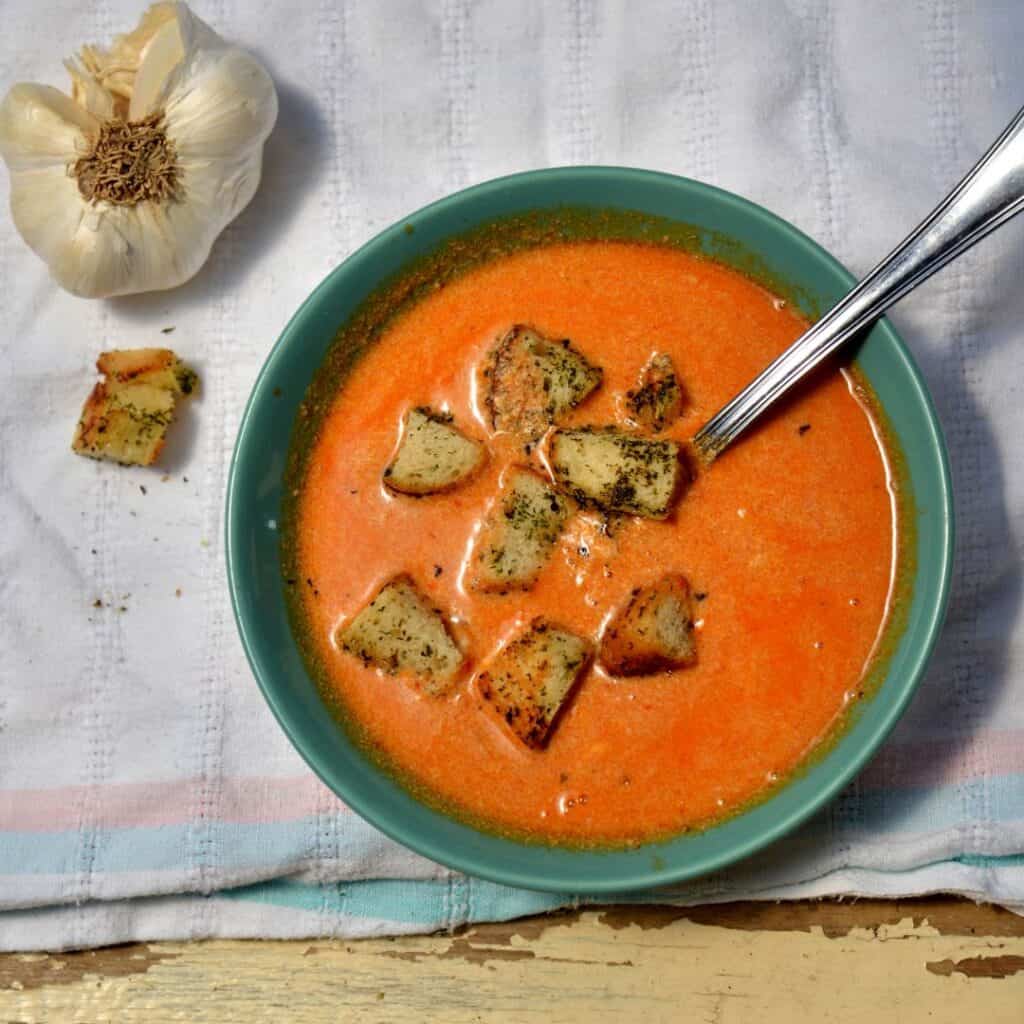
Sopa de Ajo, or Garlic Soup, is a simple yet deeply traditional Spanish food from Castilla y León.
This rustic soup combines the robust flavors of garlic, stale bread, and smoky paprika, creating a hearty, comforting, and nutritious base.
A poached egg is often added to the mix, lending a rich, velvety texture that enhances the soup’s overall depth.
Traditionally enjoyed by shepherds and farmers, Sopa de Ajo embodies the essence of Spanish peasant cuisine, transforming humble ingredients into a flavorful and nourishing meal.
Read: Spanish Garlic Soup Recipe
Traditional Dishes in Northern Spain
As a traveler, you can’t be satisfied with just visiting. It is all about the experience, and tasting food in Northern Spain is no exception!
An alternative name for this region can be “eating well is a duty” since gastronomy is one of the most important aspects of their daily lives.
The Basque country is a typical representative of the region and is famous for its tradition of pinchos, which goes from bar to bar and samples food.
22. Pimientos de Padrón – Padrón Peppers
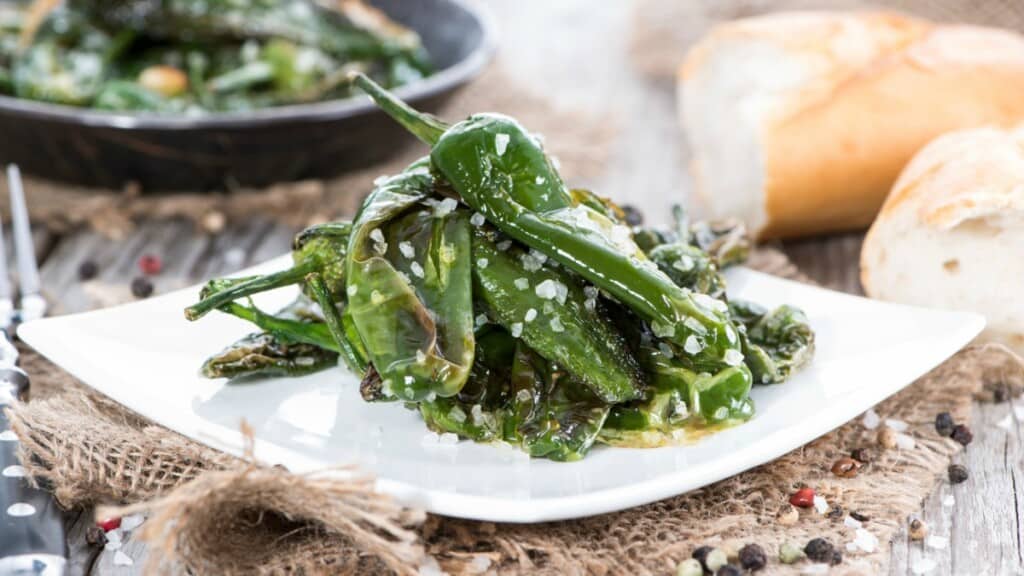
Pimientos de Padrón (padrón peppers) are a rustic and traditional Spanish dish made from a particular type of pepper that grows in northern Spain.
It is typically served as a snack, but it is not uncommon to find it part of a bigger tapas (appetizers or snacks) buffet.
If you’re after some typical food in Spain that may have a little kick to it, pimientos del Padrón make for a delicious tapas dish.
Like a lot of Spanish food, these green peppers are packed full of flavor. Although they are typically mild, there’s always the chance of finding a spicy outlier in your bowl!
There’s a Galician saying: Pimentos de Padrón – some are hot, some are not!
The Padrón pepper originates from the Padrón region in Galicia in northwestern Spain.
Traditionally they come served hot after being grilled or fried lightly in olive oil and sprinkled with a little salt.
Pimentos del Padrón are usually served still with the stalks on. To eat this tasty food in Spanish style, hold them by the stalks and take a nice big bite.
Spanish Pimientos de Padrón
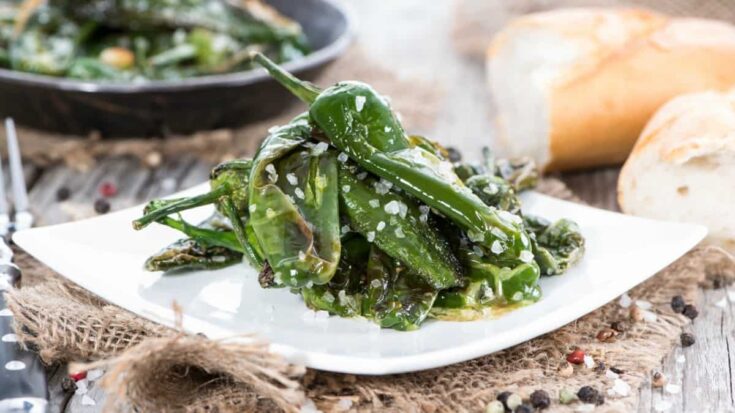
Pimientos de Padron can be described as a rustic and traditional Spanish dish, made from a particular type of pepper that grows in Northern Spain. It is typically served as a snack, but it is not uncommon to find it as a part of a bigger tapa buffet.
Ingredients
- 200g of Pimientos de Pardon
- 1 tablespoon of fresh pepper
- 1 tablespoon of flaky oil and sea salt
Instructions
- Prepare Pimientos de Padrón along with a bit of fresh pepper, flaky sea salt, and flaky oil for frying. Make sure that you wash the vegetables properly.
- Heat the oil and fry the pimientos.
- You will know that they are fried once they get softer.
- Serve them on a plate and sprinkle salt and fresh pepper over.
Notes
It is one of the simplest snacks to recreate from the comfort of your home.
23. Pulpo a la Gallega – Polbo á Feira
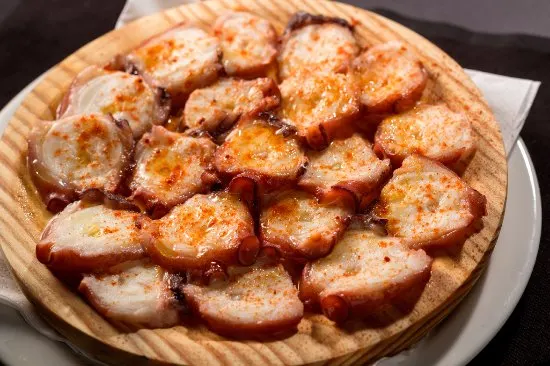
Apart from being one of the most typical foods from the Northern parts of Spain, pulpo a la gallega (polbo á feira) is also one of the easiest to make.
To recreate it in the kitchen, only four ingredients are needed, and they are all easy to find.
This makes it a great option for making a quick and tasty dinner of food from Spain.
Pulpo a la Gallega - Spanish Recipe

There are only four ingredients needed to recreate it in the kitchen and they are all easy to find. It is a great option for making a quick and tasty dinner.
Ingredients
- 1 octopus
- 1 paprika
- 1 tablespoon of olive oil
- Salt
Instructions
- The key here is in preparation. You need about 20 minutes to boil the octopus, and another 20 minutes to cool it down.
- The next step is to separate the head from the tentacles and cut the tentacles into small pieces (you can use scissors).
- Once you prepare the tentacles, toss them into olive oil, add paprika and salt.
24. Bacalao – Cod
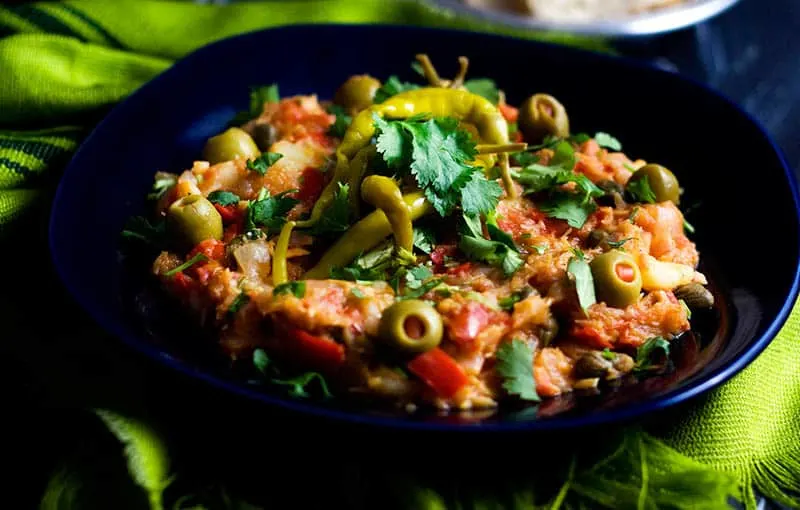
I mentioned before a typical Christmas dish in Spain, well, bacalao (cod) can be defined as a traditionally served Christmas dish.
It is a salt cod stew prepared with potatoes, tomatoes, and garlic.
But please note that a good bacalao (cod) needs time to prepare, especially due to the level of salinity!
Some of the best bacalao (cod) can be enjoyed in San Sebastian, northern Spain.
It is also having the countryside where you can enjoy farms which is one of the best things to see in San Sebastian and it is often seen as an off the beaten path Spain attractions.
25. Fabada asturiana – Asturian Bean Stew
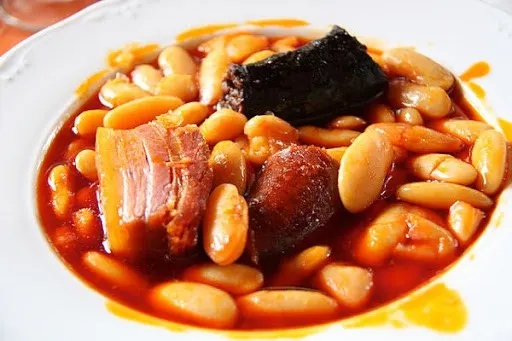
When the weather is chilly, and you want something to warm you up and gives you energy, there is nothing better than a bean stew known as “fabada asturiana” (Asturian bean stew).
Despite its origin, which is Asturias, this stew can be found all over Spain and is commonly served for lunch, especially during winter.
Spanish Fabada from Asturias

Despite its origin, which is Austrias, this stew can be found all over Spain. It is commonly served for lunch, especially during winter.
Ingredients
- 2 chorizos
- 150g of white beans
- 2 slices of bacon
- 1 ham hock
Instructions
- Make sure you soak the beans. Leave them overnight.
- Cook them along with the other ingredients the following day.
- You should remove the bones and cut the meat only after it is cooked with the beans first.
- Once you separate the bones, return the meat back with the beans.
- Cook for 30 min on low temperature
26. Tinned Seafood
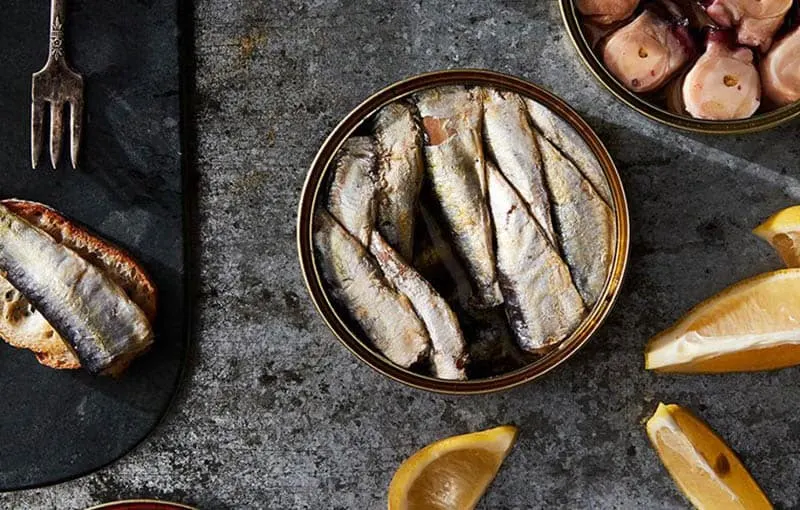
There is a long tradition of tinning seafood in Spain to keep it fresh.
Nowadays, it can be found in pretty much every place that serves food, and the versatility of the fish adds to the popularity and frequency of serving.
Tinned seafood is typically eaten for dinner or as a snack while drinking.
You don’t want to wait until your next Spain vacation to try tinned seafood? Good news, you can get it at Amazon! – Check prices here
27. Chorizo a la Sidra – Chorizo in Cider
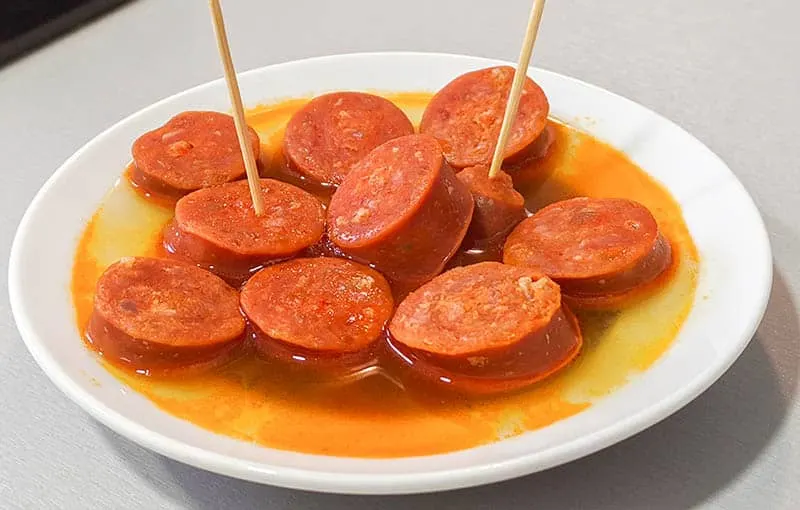
A combination of many times mentioned chorizo sausage and hard apple cider found in Asturias is among the things to eat in Spain that you don’t want to miss.
It is often prepared during barbecues but is commonly served as an appetizer.
Chorizo is not complicated to make, but the quality of the ingredients makes a huge difference!
If you can’t travel to Spain right now, you can still order Spanish chorizo online – Check it on Amazon
Cider Chorizo from Asturias
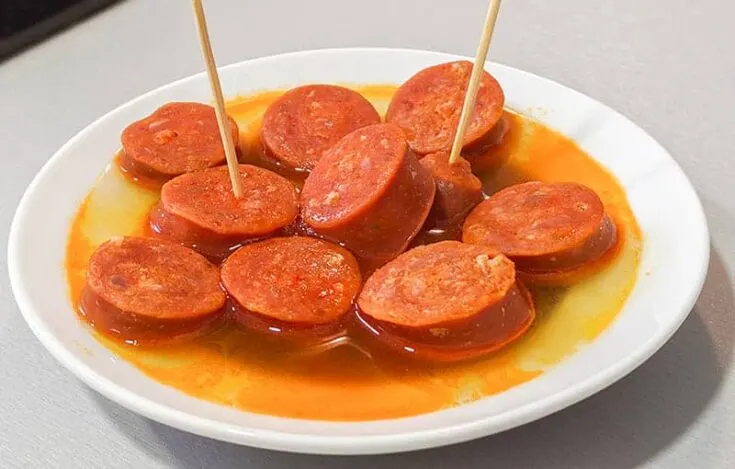
Cider Chorizo is often prepared during barbecues but commonly served as an appetizer. It is not complicated to make, but the quality of the ingredients makes a huge difference.
Ingredients
- ½ kg of chorizo sausage
- 1 ½ cup of apple cider (hard)
- A few bay leaves and chopped parsley
- 1 tablespoon of olive oil
Instructions
- Fry sliced chorizo in a pan.
- Add apple cider and bay leaves and simmer for approximately 10 minutes.
- The cue to stop simmering is that the cider becomes syrupy.
- Serve this appetizer in a bowl and sprinkle with chopped parsley.
Recommended Products
As an Amazon Associate and member of other affiliate programs, I earn from qualifying purchases.
Nutrition Information:
Yield:
5Serving Size:
1Amount Per Serving: Calories: 513Total Fat: 41gSaturated Fat: 15gTrans Fat: 0gUnsaturated Fat: 24gCholesterol: 88mgSodium: 1238mgCarbohydrates: 10gFiber: 0gSugar: 7gProtein: 24g
28. Marmitako
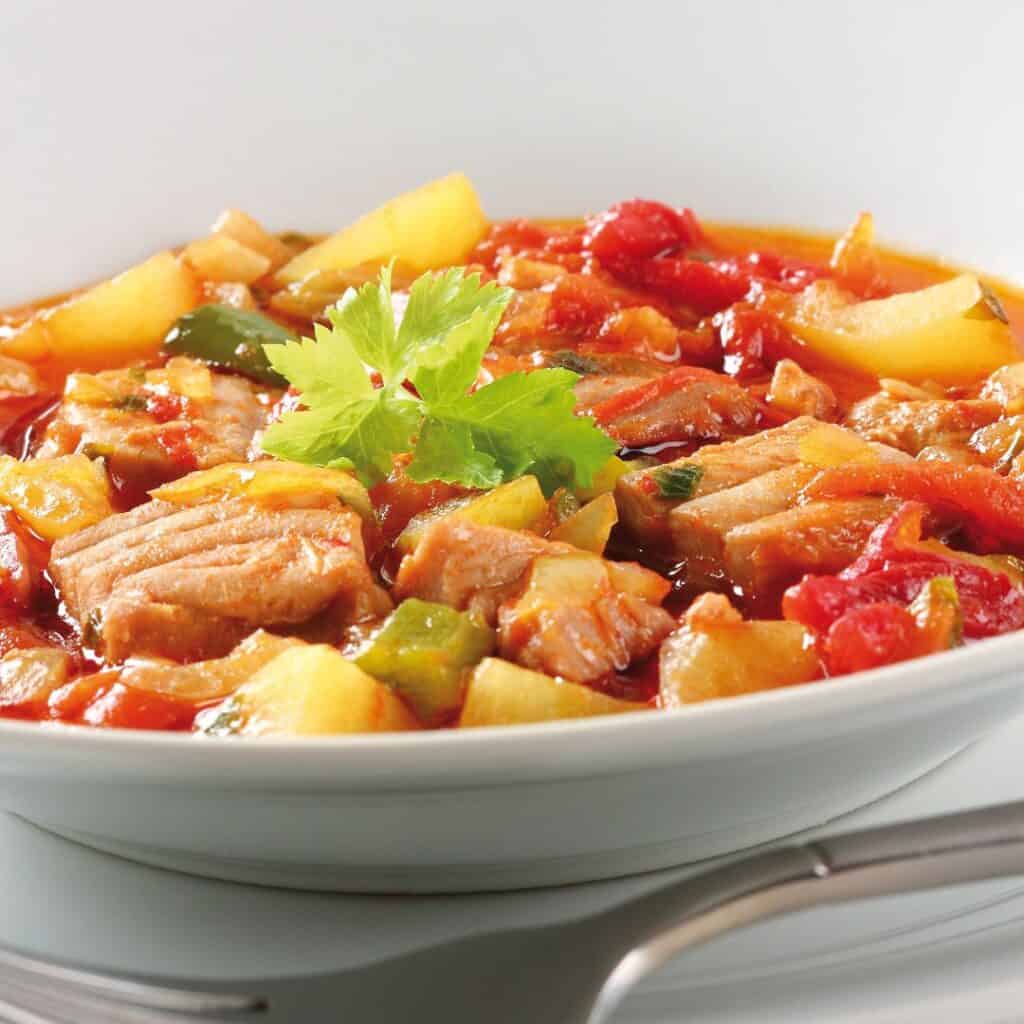
Marmitako is a Basque tuna and potato stew that offers a taste of the sea with its hearty and flavorful ingredients, making this one of the best unique food in Spain.
This Spain’s traditional food is made with fresh tuna, tender potatoes, vibrant peppers, ripe tomatoes, and sweet onions, all simmered together to create a rich and satisfying stew.
Originally enjoyed by Basque fishermen during their long voyages, Marmitako remains a cherished comfort food that captures the essence of coastal living.
Its robust flavors and nourishing qualities make it a perfect dish for warming up after a day by the sea. It embodies the simple yet exquisite culinary traditions of the Basque Country.
Read: Best Marmitako Recipe
Popular Food from Southern Spain
Many have written about the several attractions of Andalusia and its food.
Some people can be surprised to hear that Sevilla is not only popular because of its amazing cultural heritage, but also because it has some of the oldest tapas restaurants in Spain.
But besides Seville, there are plenty of other towns waiting for you with amazing Andalusian food.
29. Gazpacho – Cold Soup
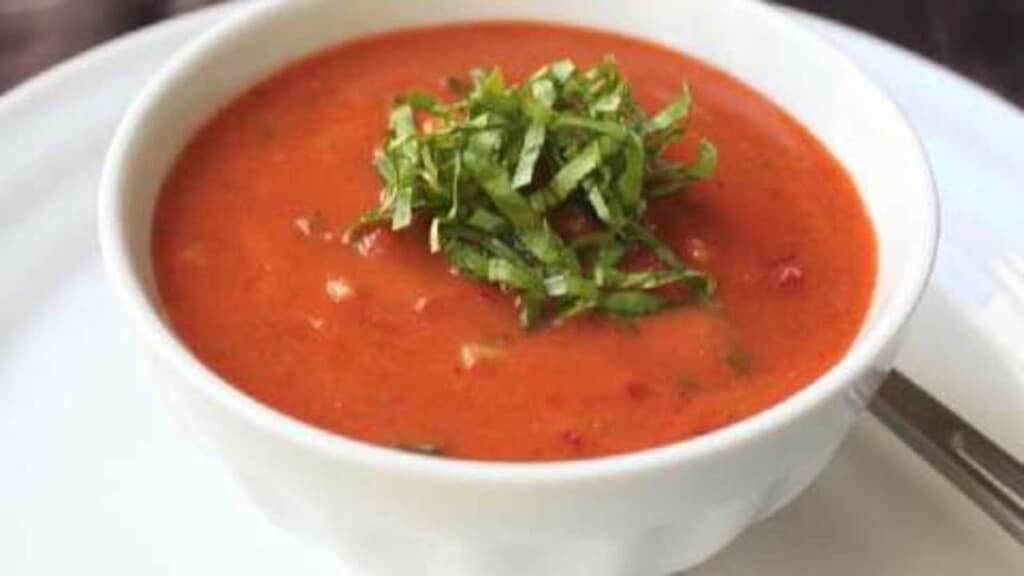
Apart from being one of the most notable seasonal soups, gazpacho (cold soup) is another perfect option for those who don’t eat meat and want to know what to eat in Spain.
It is prepared with raw ingredients and commonly served cold and during hot summer days.
Read: Andalusian Gazpacho Recipe
30. Salmorejo
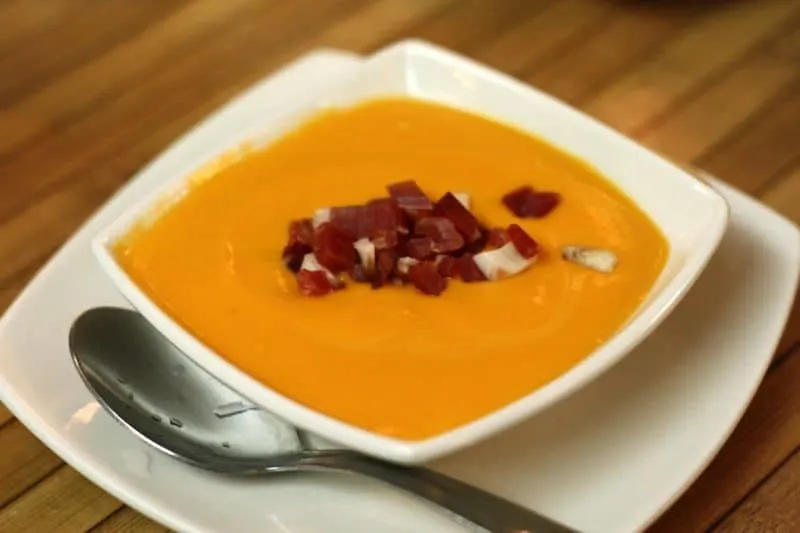
This is another cold soup that is typical for the southern Spanish region.
Although it has similarities with gazpacho (cold soup), Salmorejo is creamier and tastier, due to the ham that adds to the flavor.
Just like gazpacho (cold soup), it is also served during summer.
Spanish Salmorejo
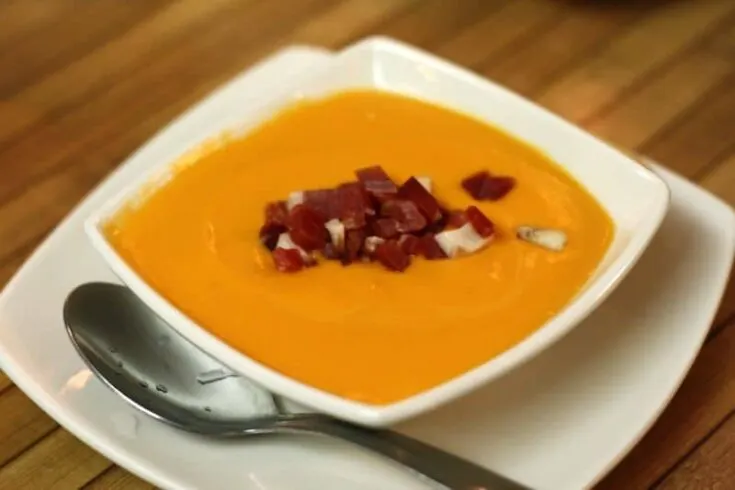
Salmoerejo is another cold soup that is typical for the southern Spanish region. Although it has similarities with gazpacho, Salmorejo is creamier and tastier, due to the ham that adds to the flavor. Just like gazpacho, it is also served during summer.
Ingredients
- 2 pounds of ripe tomatoes
- 3 slices of bread
- 2-3 cloves of garlic
- 1 tablespoon of cider vinegar and olive oil
- 2 tablespoons of ham
- 1 hard-boiled egg
Instructions
- Blend the Salmorejo ingredients but make sure you peel the tomatoes first.
- When you get the even mixture, pour it into the bowl and garnish it.
31. Croquetas de Jamón – Ham Croquettes
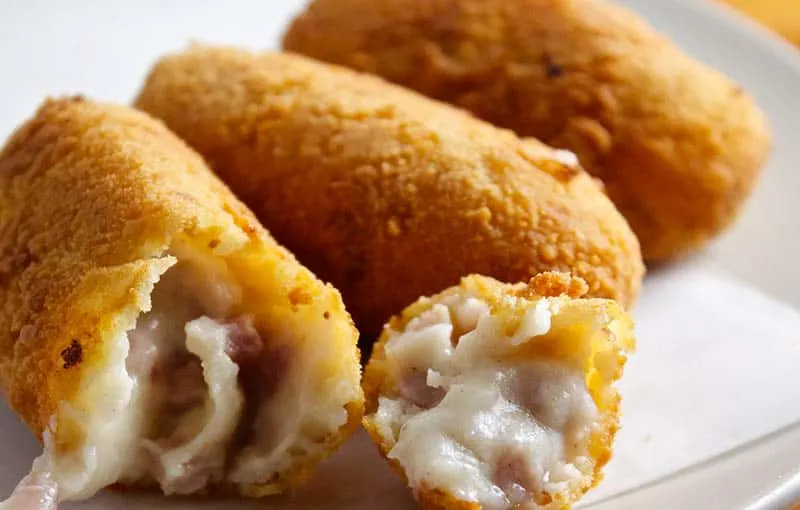
Croquetas de jamón (ham croquettes) are a popular Southern appetizer made from bread crumbs, olive oil, ham, and seasoning.
They are one of the most popular foods in Spain and one of the easiest to make at home, and you can also serve them as a light dinner.
Read: Spanish Ham Croquettes Recipe
32. Calamares a la Andaluza – Andalusian-Style Squid
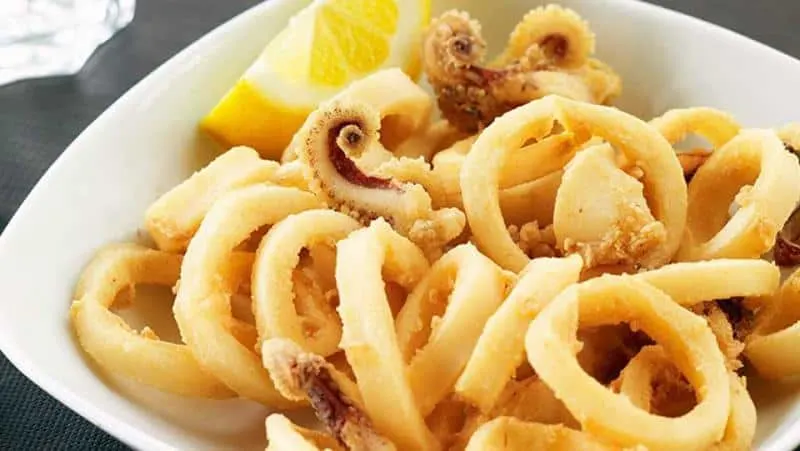
If you love seafood and want to know what to eat in Spain when trying tapas, calamari is the answer!
Fried calamari (squid) is the best-known Andalusian flavor, and one of the most famous tapas (appetizers or snacks) made from seafood and very easy to prepare.
I would point out that the best way to enjoy calamari (squid) is to consume them with a cold beer.
Read: Spanish Calamari Recipe
33. Espetos – Sardine Skewers

When it comes to espetos (sardine skewers), Malaga has the classic ones as they are part of a lifestyle and are treated as ancestral culinary.
It’s basically THE Malaga dish!
The whole preparation process is unique in this region and represents one of the most authentic foods in the world.
Read: Espetos Recipe
34. Gambas al Ajillo – Garlic Shrimps
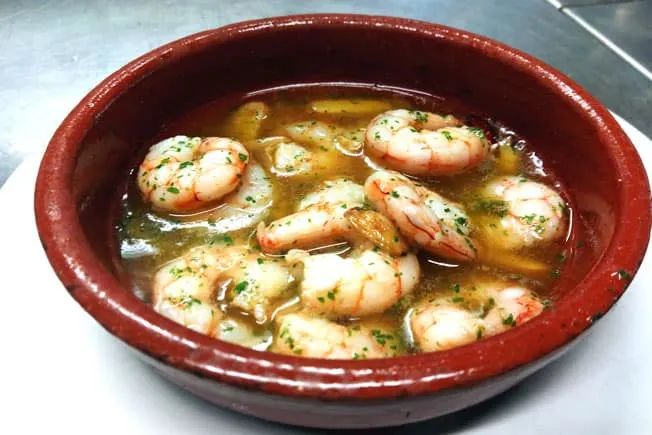
Small tapas (appetizers or snacks) are the best to taste and usually the most famous. Gambas al ajillo (garlic shrimp) are the best example.
This is a truly Spanish dish, and involves a lot of garlic and paprika, with slight variations in additional ingredients from place to place.
Read: Spanish Garlic Shrimp Recipe
35. Boquerones en Vinagre – Anchovies in Vinegar
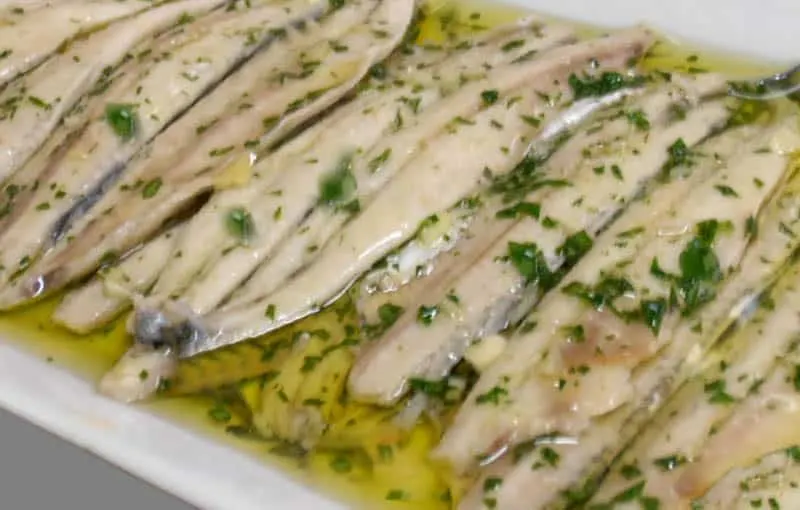
The summers in southern Spain are always better with a plate of boquerones en vinegar (anchovies in vinegar), an awesome appetizer made from small blue-colored, marinated fish.
The best time to eat this tapa (appetizer or snack) is between April and September, when there is plenty of fish.
Still, it has to be carefully prepared to avoid possible diseases from the parasites that inhabit it!
It’s one of my favorite foods from Spain, especially on hangover days!
Read: Fried Anchovies – Boquerones Fritos Recipe
36. Pollo al Ajillo – Garlic Chicken
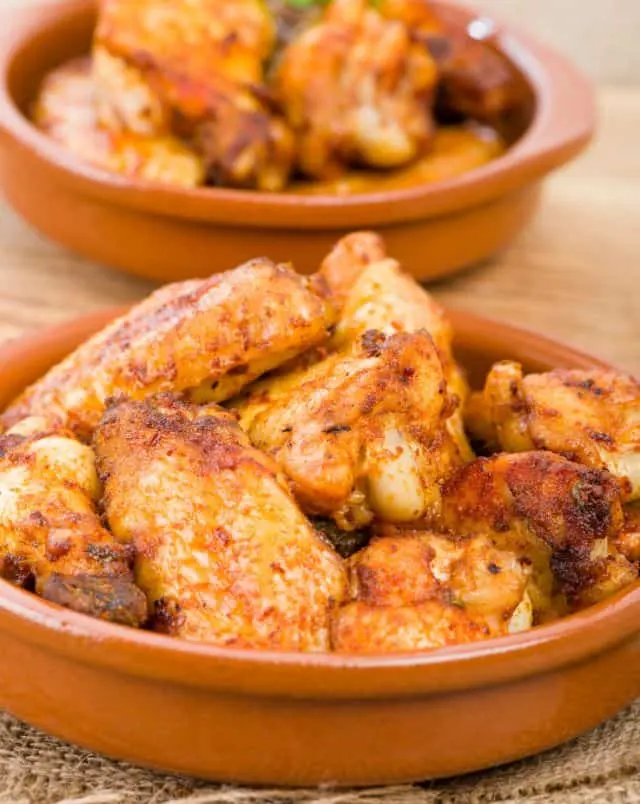
When I’m asked what Spain foods you can easily make at home, pollo al ajillo often comes to mind.
If you know Spanish or are familiar with other Spanish food names, you can probably guess that this is Spanish “garlic chicken.
One of the most popular Spanish foods with locals and visitors alike, pollo al ajillo is made with chicken pieces, white wine, parsley and a generous helping of garlic.
So while this might not be what to eat in Spain on a first date, it is definitely a tasty choice!
If you don’t like spice, check with your server before ordering as ajillo sauce traditionally has lots of paprika in it.
However, I have found it isn’t always included with this particular famous food in Spain.
37. Rabo de Toro
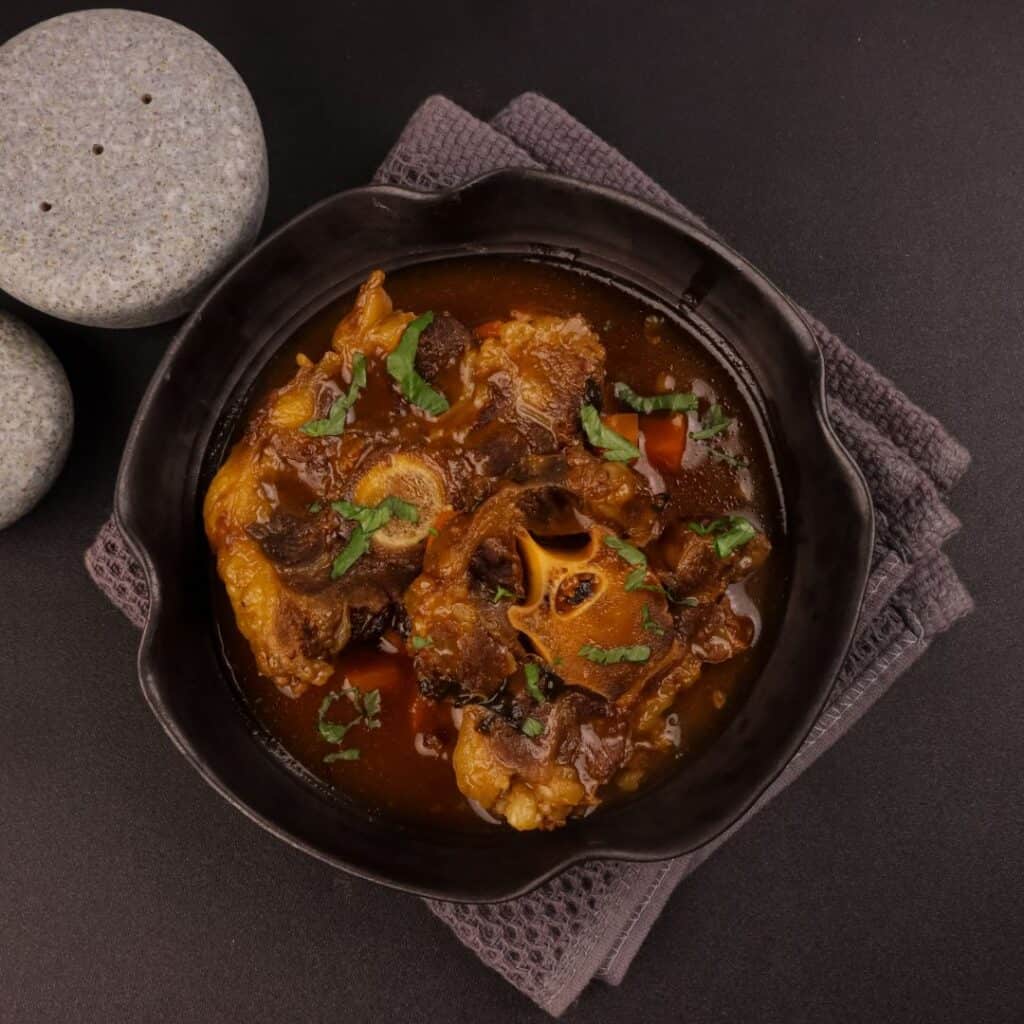
Rabo de Toro, a slow-cooked oxtail stew, is a quintessential Spanish traditional food with deep, rich flavors and a melt-in-your-mouth texture.
This traditional recipe involves braising oxtail with red wine, a medley of vegetables, and a blend of aromatic spices until the meat becomes incredibly tender and flavorful.
The lengthy cooking process melts the robust ingredients together, creating a thick, savory sauce that perfectly complements the succulent oxtail.
Often served with crusty bread or potatoes to soak up the delicious gravy, Rabo de Toro is a comforting and hearty dish reflecting Spanish cuisine’s warmth and depth.
Read: Rabo de Toro Recipe
Famous Spanish Foods Found All Over Spain
Of course, aside from the regional food of Spain, some famous foods in Spain can be found everywhere in the country.
The foods below don’t have a specific origin – though there may be a regional way of making them – and you can find them everywhere in Spain at good quality.
38. Sangria
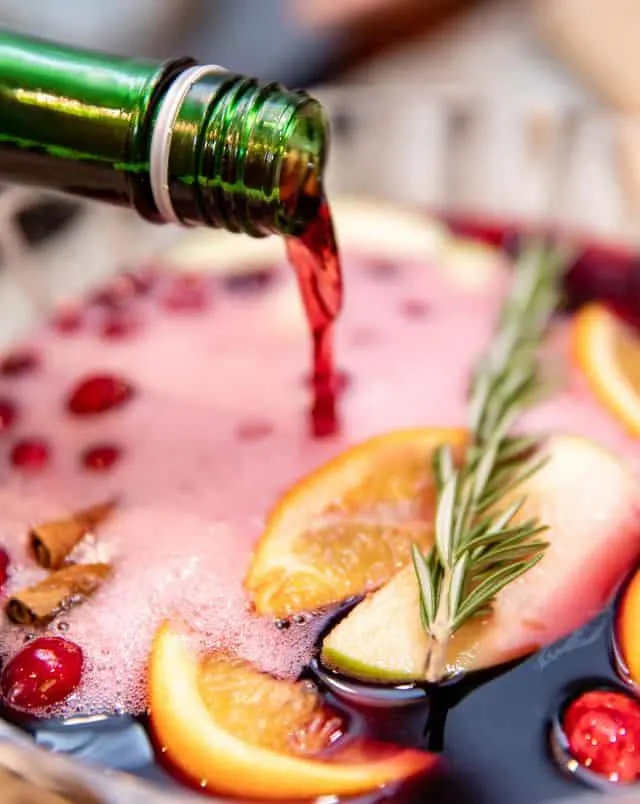
When it comes to famous Spanish foods, lots of people also start thinking about what they want to drink with them.
Many of them opt for sangria, one of the staples of Spain food culture.
This formidable fruity punch-like drink can be traced back to the 18th century, although the exact origin is unknown.
Spain and Portugal are the only Iberian countries that are allowed to use the name “sangria,” which means “bloodletting,” possibly due to the drink’s rich red color.
Red wine is used as a base, augmented with fruit, other sweeteners, and sometimes even other alcoholic extras.
Just as there are multitudes of different foods of Spain, there are also plenty of different sangria recipes.
More recently, the “sangria blanca” has emerged as a popular variation of this delicious drink, which uses white wine as a base instead of red.
39. Aceitunas – Spanish Olives

You can’t really try Spain’s food without encountering aceitunas (olives), even if it’s just as a side or appetizer.
In fact, Spain is the world’s largest producer of both olives and olive oil!
As you can imagine, there are many different varieties of olives available in Spain and they can be found in many traditional foods in Spain.
This Spain famous food comes in a range of flavors, from salty to nutty and bitter to sweet, as well as all shades of green and black.
With over 200 varieties to choose from, you will often find every region – and sometimes every restaurant – offers a different type.
So try some olives, find your favorite, and then bring some food from Spain home as a gift (for yourself or someone else)! – Buy here on Amazon
40. Empanadas
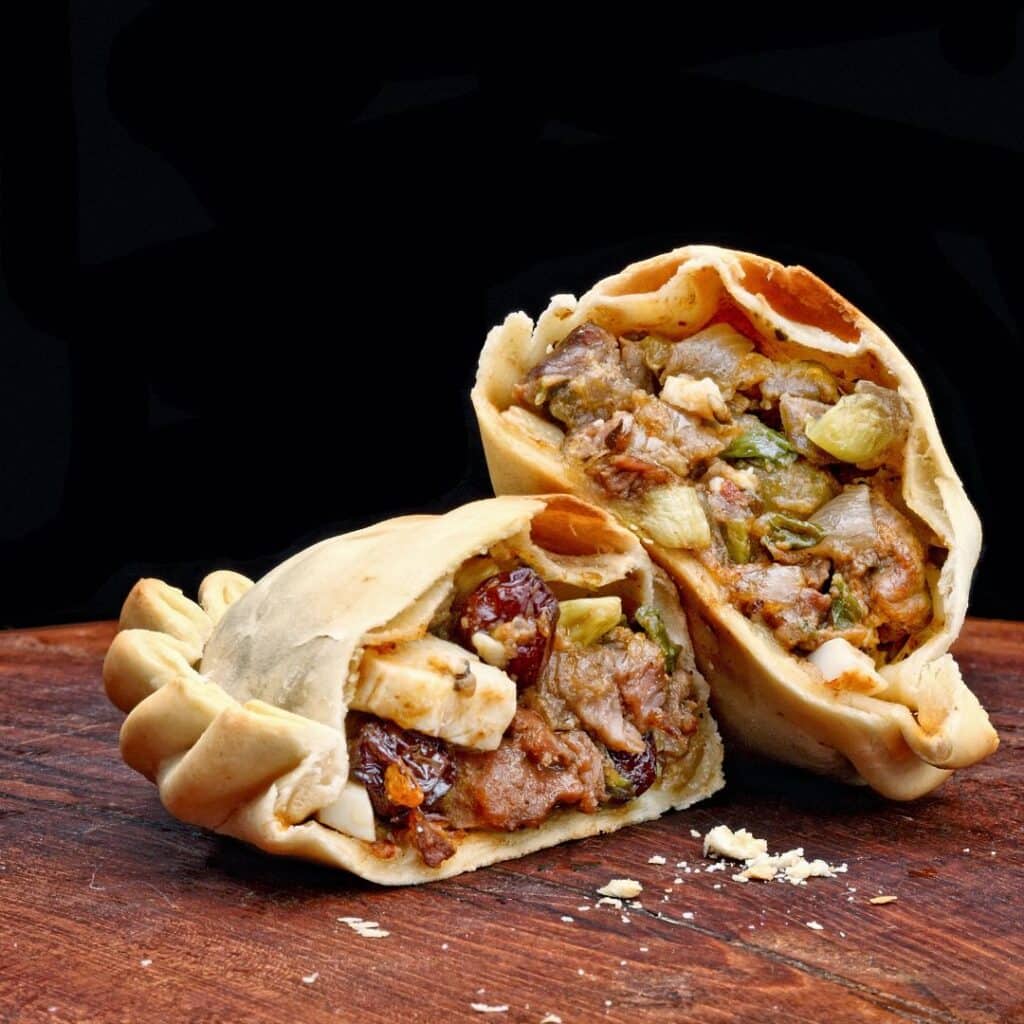
Empanadas, one of the most popular foods in Spain, are savory pastries filled with a variety of ingredients, including meat, fish, or vegetables.
These hand-held delights are found in bakeries and markets across Spain, each region offering its own unique twist on the classic recipe.
The golden, flaky crust encases a flavorful filling, often seasoned with herbs and spices, making each bite a delicious blend of textures and tastes. That’s why this is one of the best Spanish food!
Read: Spanish Beef Empanadas Recipe
Short FAQ about Things to eat in Spain:
What time do people eat dinner in Spain?
Dinner in Spain is eaten late, usually after 10 PM.
What food do you have to eat in Spain?
Naming a few from the list: paella, fideua, patatas bravas, etc.
Is it expensive to eat in Spain?
Meal prices in Spain can vary, but breakfast prices are usually a little cheaper than lunch or dinner. You can get a good breakfast for 5 €.
What to eat in Spain for breakfast
Some of the best traditional food in Spain to eat for breakfast is either pa amb tomàquet, or tortilla Española.
What time to eat in Spain?
The three main meals are typically eaten around the following – Breakfast: 8-9 am; Lunch: 1:30-2:30 pm; Dinner: 9-11 pm. But keep in mind that Spaniards often indulge in several snacks throughout the day.
What not to eat in Spain?
It’s not so much about specific foods, but where you eat them! If you want to try a Valencian dish, eat it in Valencia; otherwise, you will not get the full experience!
What do they eat in Spain?
People enjoy a diverse array of traditional food of Spain, ranging from fresh seafood and savory meats to flavorful stews and delightful pastries, reflecting the rich culinary traditions of the country’s various regions.
What is a Spanish famous dish?
A famous Spanish dish is Paella, a flavorful rice dish typically made with a combination of seafood, chicken, rabbit, and saffron.
What food is Spain known for?
Traditional food from Spain includes dishes like Paella, Tapas, Jamón Ibérico, and Gazpacho.
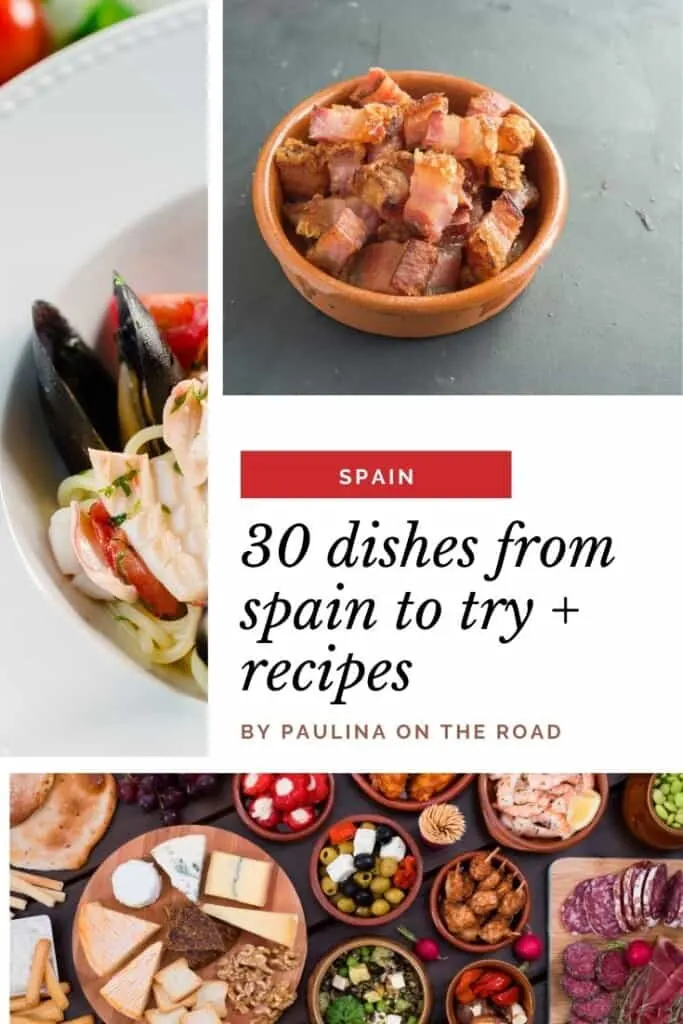
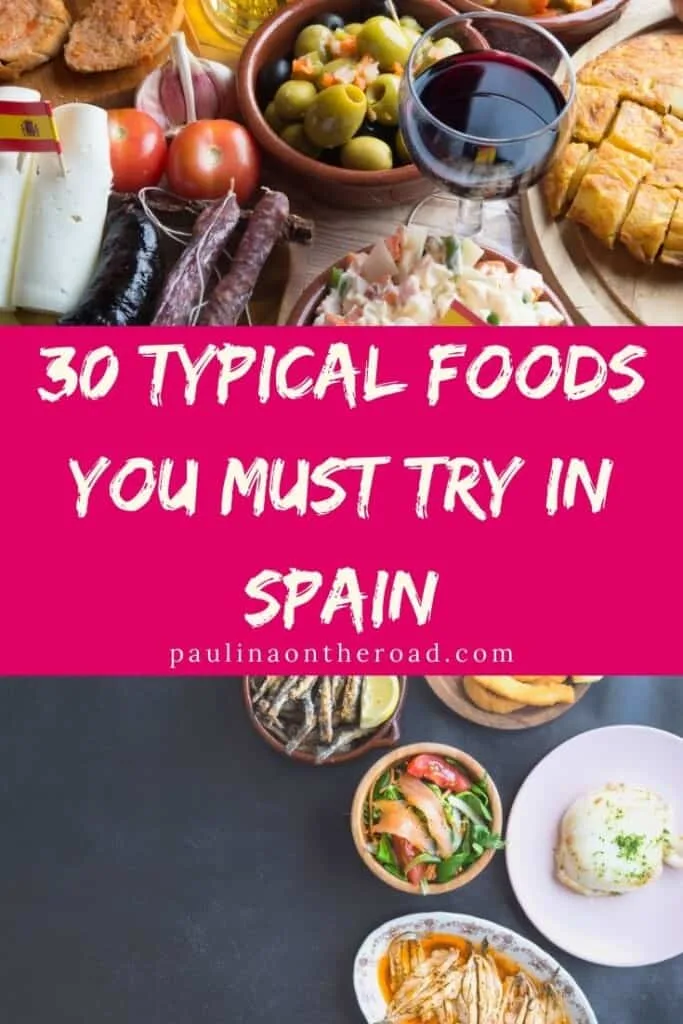
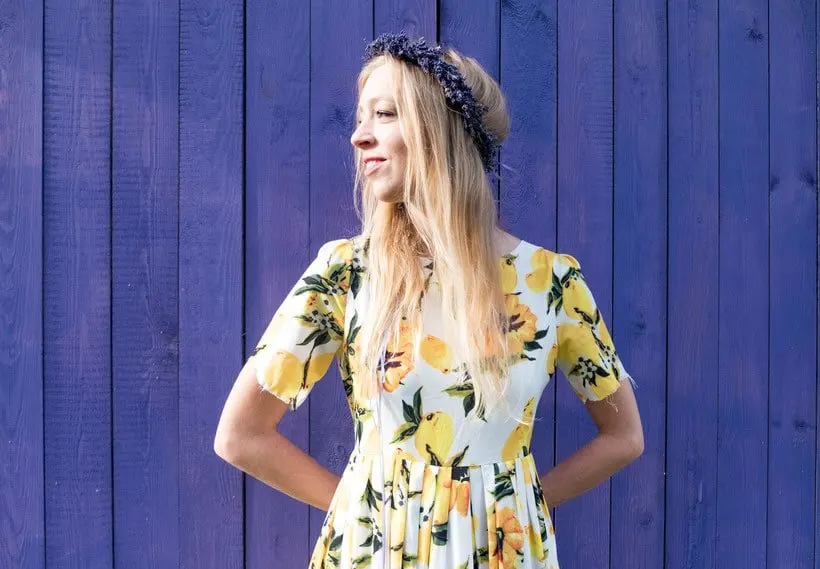
Hola! I’m Paulina, a seasoned travelette who crossed the Atlantic Ocean by Boat HitchHiking. On my blog, find expert insights for an extraordinary holiday through outdoor and sustainable travel like hiking, cycling, and sailing. Let’s embark on unforgettable journeys together! 🌍🚀
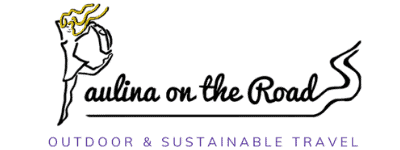
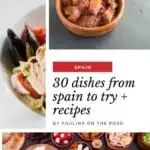
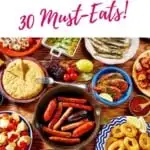


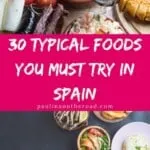

Lovely
Tuesday 19th of July 2022
I would want to be getting notifications from your food recipes
Paulina
Tuesday 2nd of August 2022
Hi dear, here you can find many more Spanish recipes and if you subscribe to the newsletter you'll get weekly Spanish recipes in your inbox: https://visitsouthernspain.com/category/food/recipes/